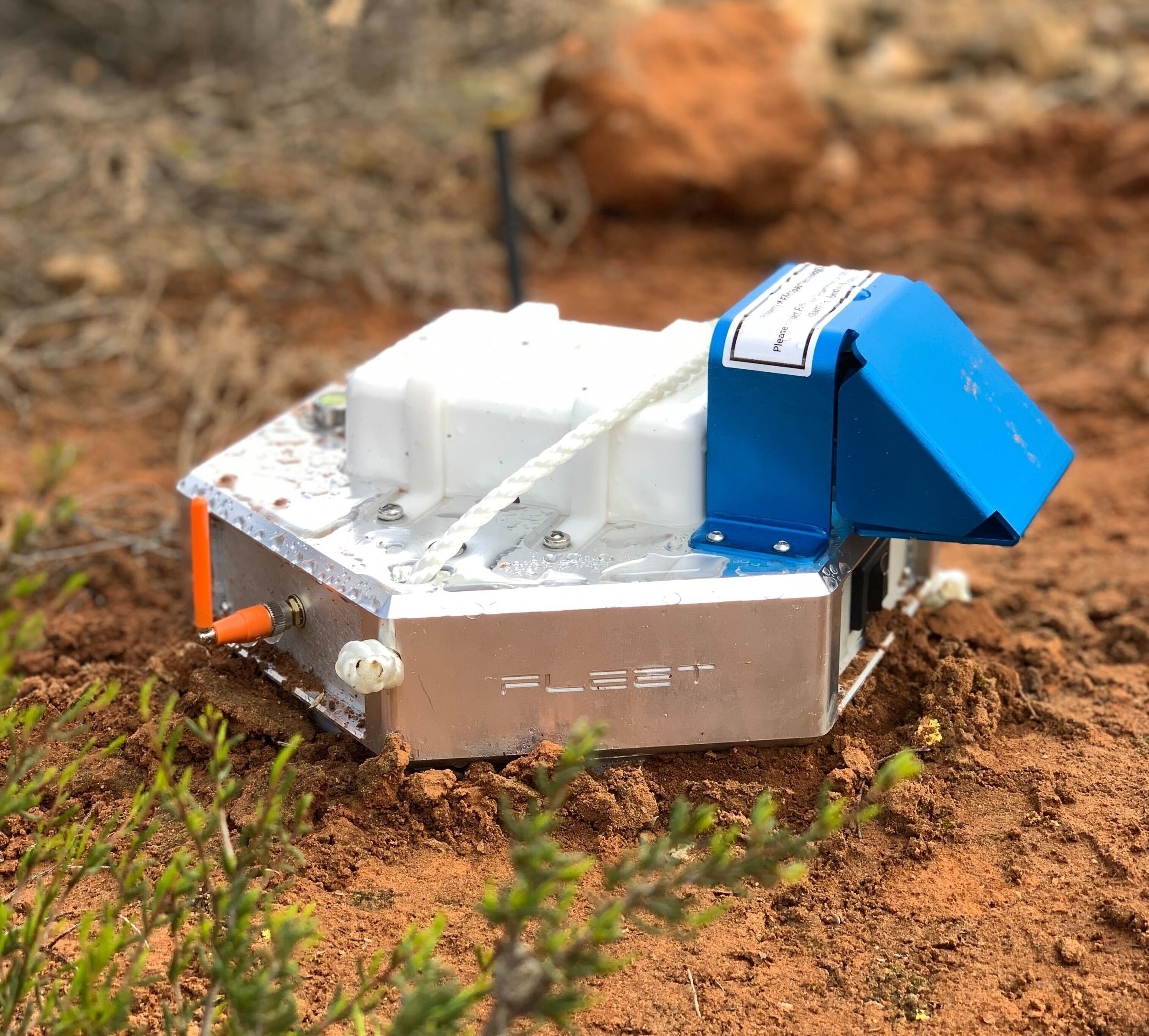
Fleet Space Technologies, a global leader in space-enabled mineral exploration, today announced that it has been named an industrial affiliate of Stanford University’s Mineral-X program - a premiere research organization combining deep expertise in geoscience, resource optimization, and artificial intelligence (AI) to enable a resilient and decarbonized mineral supply chain. Through this collaboration with Stanford University’s Mineral-X, Fleet Space aims to advance research, unlock innovation and accelerate humanity’s clean energy future leveraging space technology.
In collaboration with Stanford University’s faculty and scientists at Mineral-X - Fleet Space will conduct joint research on technological innovation to accelerate sustainable mineral discovery in support of the global clean energy transition. The focus of the research will be on the optimization of drill targeting using satellite connectivity and space-enabled geophysical sensors to deliver real-time subsurface insight at scale - vital capabilities for increasing the accuracy, efficiency, and speed of exploration campaigns worldwide.
“Fleet Space is on the forefront of advancing global efforts to leverage advanced space technology as an indispensable tool for accelerating our planet’s transition to renewable energy. The exploration technologies we’ve built at Fleet Space - enabled by our proprietary satellite constellation - represent a more sustainable and scalable path to increase the supply of energy transition minerals needed to achieve net-zero,” said Co-Founder and CEO of Fleet Space, Flavia Tata Nardini. “We’re honored to kick-off this research collaboration with one of the world’s premier universities to identify new efficiencies and insights that can propel humanity’s shift to clean energy over the coming decades.”

ExoSphere, Fleet Space’s flagship space-enabled mineral exploration solution, has rapidly become an essential tool used by the global exploration industry - delivering 3D subsurface models in days, rather than months or years with other methods. Over 35 leading exploration companies - including Rio Tinto, Barrick Gold, and Core Lithium - have used the technology to complete hundreds of surveys on a variety of different commodity types across five continents. The global adoption of ExoSphere was a major driver behind Fleet Space’s exponential growth in 2023, leading to a doubling of its valuation to A350$ million, and being named Australia’s fastest growing company.
“In an era marked by declining success rates in mineral exploration and rising demand for raw materials needed for the energy transition, scalable 3D geophysical methods stand out as the cornerstone for breakthroughs in exploration efficiency. These methods provide a vital foundation for multi-physics and ML technologies to enhance exploration success,” added Gerrit Olivier, Chief Scientist at Fleet Space. “We are thrilled to partner with Stanford's Mineral-X, a global leader in this domain, to demonstrate how our real-time Ambient Noise Tomography (ANT) technology can revolutionize drilling and exploration processes, setting new standards for efficiency and effectiveness in the field.”
“The global challenges of decarbonization, supply chain complexity, and the critical mineral shortage require a sustained and collective commitment to innovation to deliver the energy transition our planet so desperately needs,” added Dr. Jef Caers, PHD, Professor of Earth Sciences at Stanford and founder of Mineral-X. “We are thrilled to work with Fleet Space to accelerate the development of a resilient supply chain for the minerals needed for clean energy innovation globally. The technology developed by Fleet Space provides critical innovations in geophysical imaging needed to map orebodies with an accuracy not possible with current air-borne and surface methods.
After completing a heavily oversubscribed A$50M Series C funding round, and scaling its mineral exploration technology, ExoSphere, Fleet Space expanded its global footprint to the US, Canada, Chile, and Luxembourg with 120+ employees globally. In November, the company announced that a variant of its ExoSphere technology, SPIDER, will be deployed on the Moon as part of a NASA Commercial Lunar Payload Services (CLPS) initiative to search for water ice deposits and deliver subsurface insight about the lunar regolith in 2026.
+++
About Fleet Space Technologies
Fleet Space Technologies is Australia’s leading space exploration company revolutionising critical mineral discovery, space technologies, and defence with its satellite-enabled solutions and seismic array technology (Exosphere by Fleet®). Headquartered at the national centre of Australia’s space industry in Adelaide, Fleet has expanded its global footprint to the US, Canada, Chile, and Luxembourg with over 120+ employees, representing 37 nationalities, worldwide. In 2023, Fleet Space was named “Australia’s Fastest Growing Company” by the Australian Financial Review.
About Stanford Mineral-X
Mineral-X is a membership-based industrial affiliates program at Stanford University, one of the world’s leading research and teaching institutions. The purpose of the program is to foster research, innovation, and acceleration to a renewable energy future. It focuses on technological innovation needed to create a resilient mineral supply chain to achieve clean renewable energy. The program will also develop new pathways in the Mineral-Energy nexus, such as geothermal energy and renewable energy resources that enable a decarbonized mineral supply chain.

No comments:
Post a Comment